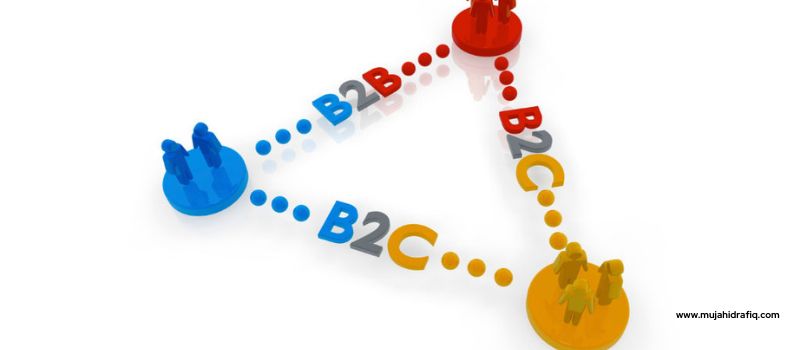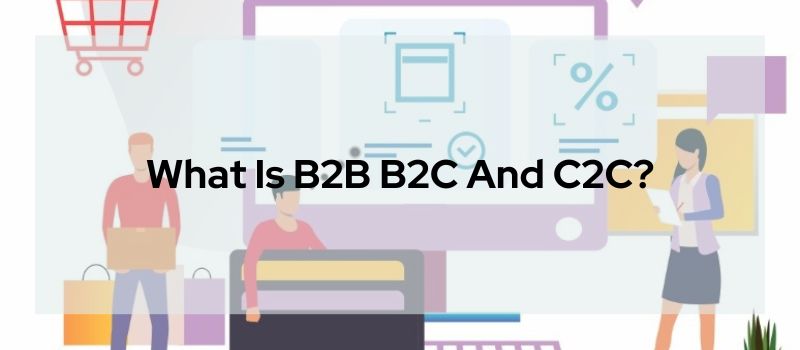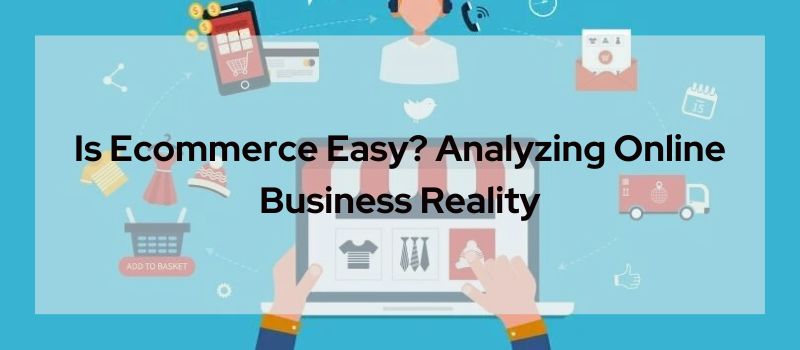Have you wondered how businesses communicate with one another and consumers? Business transactions might be B2B, B2C, or C2C. How do these acronyms affect our economy? Let’s examine B2B, B2C, and C2C and their effects on businesses and consumers.
B2B, or “Business-to-Business,” refers to transactions between firms. B2C, or “Business-to-Consumer,” refers to business-to-consumer interactions. Finally, C2C, or “Consumer-to-Consumer,” refers to consumer-to-consumer transactions. These three models illustrate how products and services circulate in our marketplace, each with its own dynamics and ramifications.
Why do these distinctions matter? Understanding B2B, B2C, and C2C helps us understand our economy. Recognizing the complexities and power dynamics of these transactions can help organizations modify their strategy and consumers make educated judgments. Join us as we discuss what is B2B B2C and C2C? and how they impact the contemporary business world.
These definitions are only the beginning. We’ll use real-world examples to understand B2B, B2C, and C2C, as well as their pros and cons and the latest developments. We will learn about B2B, B2C, and C2C from prominent business leaders. So buckle in and explore the exciting world of commercial transactions that fuel our economy.

Contents
What Is B2B B2C And C2C?
The terms B2B, B2C, and C2C are acronyms for various sorts of transactions in the e-commerce sector. B2B refers to “Business-to-Business” exchanges in which one business starts a transaction with another.
The term “Business-to-Consumer” (B2C) refers to situations in which companies offer goods or services directly to customers. C2C, or “Consumer-to-Consumer,” refers to business dealings between specific consumers.
B2B transactions are those that take place between businesses and are particularly geared towards businesses in the world of e-commerce. These transactions sometimes entail large orders, unique goods, or services made to specifically fit the requirements of other companies.
B2B contacts are essential to the supply chain because they make it possible for firms to function and expand while facilitating the movement of resources. Contrarily, business-to-consumer (B2C) transactions are centered on the direct selling of goods or services from companies to individual customers.
In our daily lives, we come across this type of e-commerce the most frequently. B2C purchases can occur on a variety of venues, including online marketplaces and the websites of specific brands. B2C e-commerce has transformed how we purchase and given consumers and companies access to a vast array of opportunities thanks to its accessibility and simplicity.
C2C transactions include people doing business directly with one another, frequently through internet marketplaces or classified ads. These exchanges can take many forms, from peer-to-peer sales of old goods to more specialized platforms that allow for the exchange of services or specialized goods.
Due to its ease of use and the possibility for people to directly monetize their assets or abilities, C2C e-commerce has grown in popularity. It’s important for both organizations and customers to understand the differences between B2B, B2C, and C2C transactions.
Businesses can target their offers more effectively and adjust their marketing campaigns as a result, while customers can make well-informed choices based on their unique requirements and preferences. Every one of these transaction kinds has unique dynamics, benefits, and difficulties that shape the e-commerce sector and propel economic progress.

Acquiring A B2B Perspective
B2B, or Business-to-Business, refers to transactions that occur between two businesses. In this model, the buyers and sellers are both business entities rather than individual consumers. B2B transactions often involve large quantities of products or services and can take place offline or online through dedicated B2B marketplaces.
Pros Of B2B
There are several benefits to engaging in B2B transactions. Firstly, businesses can negotiate pricing and terms directly with other businesses, leading to potential cost savings and more favorable agreements. B2B transactions can foster long-term partnerships and collaborations, which can contribute to business growth and stability. B2B transactions also provide an opportunity for businesses to access specialized products or services that may not be available through consumer channels.
Examples of B2B
Examples of B2B transactions include manufacturers purchasing raw materials from suppliers, retailers sourcing products from wholesalers, and businesses hiring consulting services from specialized firms. In these cases, the buyers are businesses looking to fulfill their operational or production needs.
Acquiring A B2C Perspective
B2C, or Business-to-Consumer, refers to transactions that occur between a business and individual consumers. This model represents the most common form of commerce that individuals engage in regularly. B2C transactions typically take place through online platforms or physical retail stores.
Benefits Of B2C
B2C transactions offer several benefits to businesses. Firstly, businesses can tap into a vast consumer market and target their products or services directly to individual customers. This direct access allows businesses to build brand recognition, and loyalty, and establish a customer base. B2C transactions also provide businesses with valuable consumer insights that can inform marketing strategies and product development.
Examples of B2C
Examples of B2C transactions include purchasing clothing from an online retailer, ordering food delivery from a restaurant, or buying electronic devices from a physical store. In these cases, the businesses cater directly to the needs and preferences of individual consumers.
Acquiring A C2C Perspective
C2C, or Consumer-to-Consumer, refers to transactions that occur between individual consumers. This model has gained significant popularity with the rise of online platforms that facilitate peer-to-peer transactions. C2C transactions can involve the buying and selling of goods, services, or even the sharing of resources.
Advantages Of C2C
C2C transactions offer individuals several benefits. Firstly, they provide an opportunity for individuals to generate income by selling products or services directly to other consumers. C2C platforms often offer convenience, allowing individuals to reach a larger audience and engage in transactions without the need for a physical storefront. C2C transactions promote sustainability by encouraging the reuse and recycling of goods.
Examples of C2C
Examples of C2C transactions include selling second-hand items through online marketplaces, renting vacation homes directly from individual owners, or offering freelance services on platforms connecting freelancers with clients. In these cases, individuals engage in direct transactions with other individuals.

Comparison between B2B, B2C, C2C
While B2B, B2C, and C2C transactions have their unique characteristics and target different parties, they all contribute to the overall landscape of commerce. B2B transactions focus on businesses fulfilling their operational needs, while B2C transactions cater directly to individual consumers.
C2C transactions empower individuals to become entrepreneurs themselves, engaging in peer-to-peer transactions. Each model has its benefits and considerations, and businesses and individuals should understand their specific goals and target audience when choosing the appropriate transaction type.
FAQS
What is the difference between B2B and B2C?
B2B transactions occur between two businesses, where one business sells products or services to another business. In contrast, B2C transactions involve businesses selling products or services directly to individual consumers.
Which businesses typically engage in C2C transactions?
Various businesses can engage in C2C transactions, especially those that provide platforms or services facilitating peer-to-peer transactions. Examples include online marketplaces, ride-sharing services, and freelance platforms.
How does B2B e-commerce work?
B2B e-commerce involves online platforms or marketplaces where businesses can connect, negotiate, and conduct transactions. These platforms often offer features like bulk orders, price negotiation, and specialized catalogs to cater to the unique needs of B2B transactions.
Can a business be both B2B and B2C?
Yes, a business can operate in both B2B and B2C domains simultaneously. For example, a clothing manufacturer might sell its products to retailers (B2B) and also maintain an online store to sell directly to individual consumers (B2C).
What are the challenges of C2C transactions?
Some challenges of C2C transactions include trust between buyers and sellers, ensuring the quality and condition of goods or services, and handling disputes or conflicts that may arise between individual consumers. Platforms often provide measures to mitigate these challenges, such as user ratings and dispute resolution systems.
Conclusion
The three separate transaction models known as B2B, B2C, and C2C are essential in the world of business. Businesses and individuals can better navigate the changing environment of traditional trade and e-commerce by being aware of their advantages and differences.
Understanding the nuances of various transaction types enables companies to create strategic alliances, build customer loyalty, and enable individuals to look into business prospects. Keeping in mind that the world of commerce is diverse, we can open up new doors for development and success by adapting to numerous transaction types.
Click here to Get ecommerce expert consultancy!
Read More:
Innovative Ideas to Launch Your Ecommerce Store Without Competitors | Made Online Selling Easy



